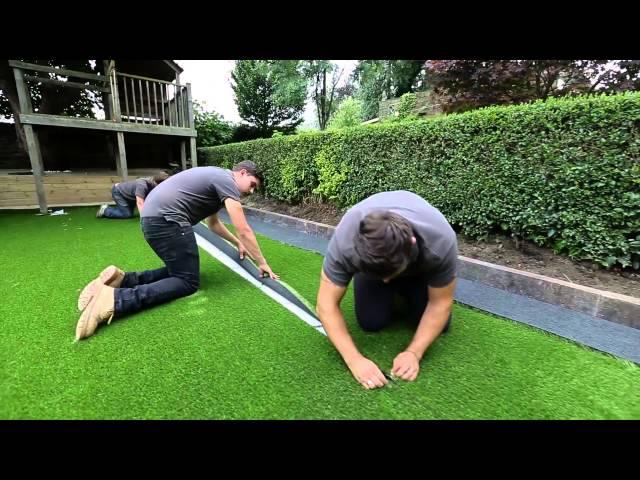When planning to instal turf on your lawn, itâ& 128;& 153;s necessity to consider not just your esthetic preferences but also how topical anesthetic endure and the landscape painting can involve turf growth and sustenance. Different types of turf grasses fly high in various climates, soil types, and environmental conditions. To check your lawn thrives, choosing the right turf installment supported on endure and landscape painting conditions is material. Hereâ& 128;& 153;s how to make the best decision for your lawnâ& 128;& 153;s long-term wellness. artificial turf.
1. Understand Your Local Climate
The first step in selecting the right turf is to consider your regionâ& 128;& 153;s climate, particularly temperature patterns, rainfall, and humidness. Different types of turf grasses are modified to particular climates, and choosing one proper to your region will insure healthier increase with less sustainment.
Warm-Season vs. Cool-Season Grasses
Warm-season grasses
: These grasses, such as Bermuda,
Zoysia
, and St. Augustine, flourish in hot climates with long, sunny summers and mild winters. They do best when temperatures consistently straddle between 75°F and 95°F and tend to go unerect during colder months.
Cool-season grasses
: Cool-season grasses like Kentucky bluegrass, meadow fescue, and ryegrass are nonpareil for areas with tank temperatures, such as those in northern regions with long winters. They grow best when temperatures are between 60°F and 75°F and tend to stay green throughout the cooler months, going dormant during extreme heat.
2. Assess the Amount of Sunlight and Shade in Your Yard
The come of sunshine your lawn receives can significantly bear upon the public presentation of your chosen turf variety show. Some grasses flourish in full sun, while others are more tolerant of shadowy areas.
Full-Sun Grasses
Bermuda and
Zoysia
: These warm-season grasses execute best in full sun. If your yard gets at least 6-8 hours of aim sunlight per day, Bermuda and
Zoysia
will flourish and provide a dense, lush lawn.
Kentucky
Bluegrass
: While Kentucky Bluegrass Region prefers tone down sun, it can suffer partial derivative sun and is all-mains to various get down conditions.
Shade-Tolerant Grasses
Fescue
: This cool-season grass over is particularly shadow-tolerant and performs well in areas with express sunshine. Fine fescue grass varieties are nonesuch for lawns with partial shade, such as those encircled by trees.
St. Augustine Grass
: This grass variety show also tolerates partial shadow, making it an first-class choice for areas where trees or buildings specify target sunlight.
3. Consider the Soil Type and Drainage
The type of soil in your yard is another crucial factor out to consider when selecting turf. Some grasses need well-drained, loamy soil, while others can stand clay or sandy soils. Additionally, the turf needs to be right for the irrigate retentiveness characteristics of your landscape painting.
Well-Drained Soils
Kentucky
Bluegrass
: This grass thrives in well-drained, fertile soil. Itâ& 128;& 153;s an fantabulous selection for areas where soil drain is optimal and workings best in cooler climates.
Bermuda
Grass
: Bermuda grass also does well in well-drained soil, especially in regions with long, hot summers. Itâ& 128;& 153;s nonesuch for cheerful lawns in dry climates.
Heavy or Clayey Soils
Zoysia
Grass
:
Zoysia
grass over is more universal to different soil types, including heavier, clay-like soils. Itâ& 128;& 153;s a good selection for lawns with compacted soil or areas prostrate to slight waterlogging.
Fescue
: Fescue can also brook heavily soils and does well in areas where wet retention is higher, though good drainage is still requirement.
4. Consider Rainfall and Watering Needs
Understanding how much rain your region typically gets will help you pick out a turf that requires an appropriate add up of irrigate. Some grasses are drought-tolerant, while others need frequent lachrymation to stay sound.
Drought-Tolerant Grasses
Buffalo Grass
: This warm-season grass is one of the most drought-tolerant options available. Itâ& 128;& 153;s saint for regions with limited rainfall or those with irrigate restrictions. Once proved, Buffalo grass over requires tokenish water.
Bermuda
Grass
: Bermuda is another drought-tolerant option, healthy in areas where irrigate conservation is necessity. Its deep root system of rules helps it get at wet deep within the soil.
Moisture-Loving Grasses
Kentucky
Bluegrass
: This grass thrives in areas with regular rainfall or where irrigation is available. It requires homogenous moisture, especially during its growing time period, to exert its vivacious putting green colour.
Fescue
: Fescue is also wet-loving and grows best in regions that experience tame to fixture rainfall. It needs shop lachrymation during dry spells, especially in hot climates.
5. Consider Lawn Usage and Maintenance Needs
The premeditated use of your lawn should also mold your turf natural selection. If your lawn will see heavy foot dealings, consider grass types that are more durable and resilient. Additionally, consider how much sustentation youâ& 128;& 153;re willing to perpetrate to your lawn.
High-Traffic Areas
Bermuda
Grass
: Bermuda grass is tough and can resist heavy foot traffic, making it paragon for sports Fields or lawns with children and pets.
Zoysia
Grass
:
Zoysia
is also serviceable and can handle tame to heavily dealings. Its thick increment habit makes it a important pick for lawns that get a lot of use.
Low-Maintenance Turf
Zoysia
and Bermuda
Grass
: Both grasses need less frequent mowing due to their slow increase rates. Once proven, they need less watering and fertilisation than some other turf types.
Fescue
: Fescue is easy to wield but may need more patronize mowing in the warmer months to exert a neat appearance.
6. Match Turf to Your Aesthetic Preferences
Aesthetics play a considerable role in the decision-making work on. Different grass over varieties have varied appearances, including colour, texture, and denseness.
For Rich Green Color
Kentucky
Bluegrass
: Known for its vivacious putting green distort, Kentucky Bluegrass is a pop choice for homeowners looking for a lush, impenetrable lawn.
Fescue
: Fescue grasses, particularly fine fescues, volunteer a soft texture and rich green color, qualification them nonpareil for nonfunctional lawns or shady areas.
For Low-Growth, Low-Maintenance Lawn
Buffalo Grass
: If you prefer a more natural, low-maintenance lawn with a wild visual aspect, Buffalo grass over is a outstanding choice. It has a soft texture and requires nominal care once proved.
Conclusion
Choosing the right turf for your lawn is not just about personal preferences; it’s about ensuring the turf can fly high in your specific brave out and landscape conditions. By assessing your local mood, soil type, sunlight exposure, rainfall patterns, and maintenance capabilities, you can select a turf that will fly high and ply a beautiful, low-maintenance lawn. Whether you choose a drouth-tolerant warm-season grass like Bermuda or a cool-season grass over like Festuca elatior, duplicate the turf to your environment is the key to a self-made lawn installation.




